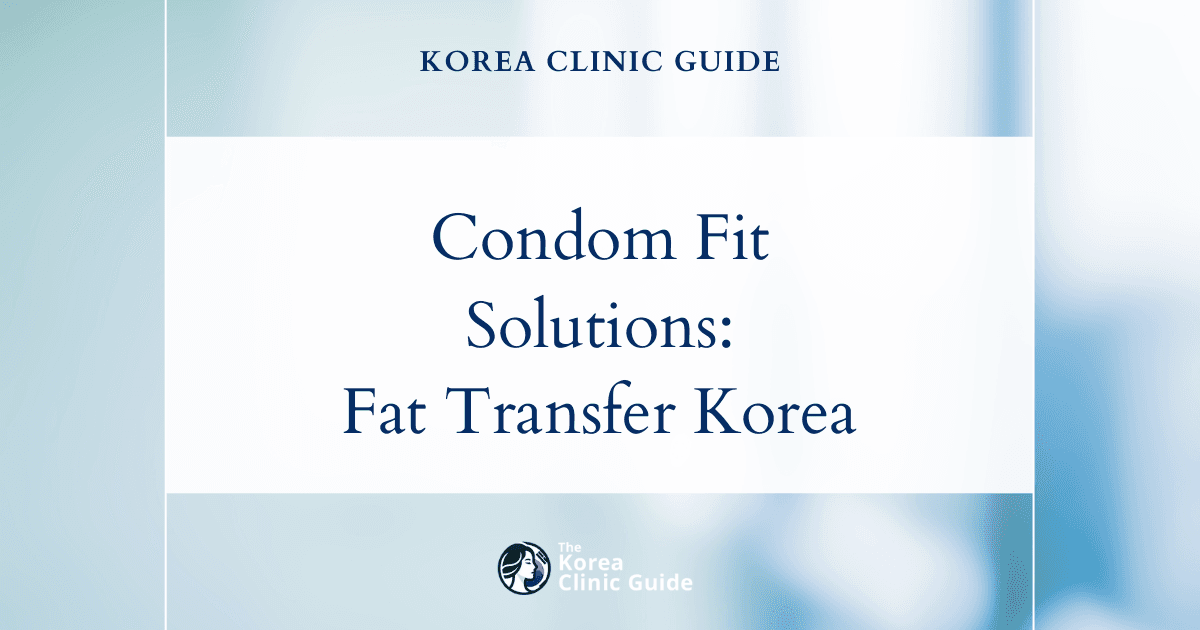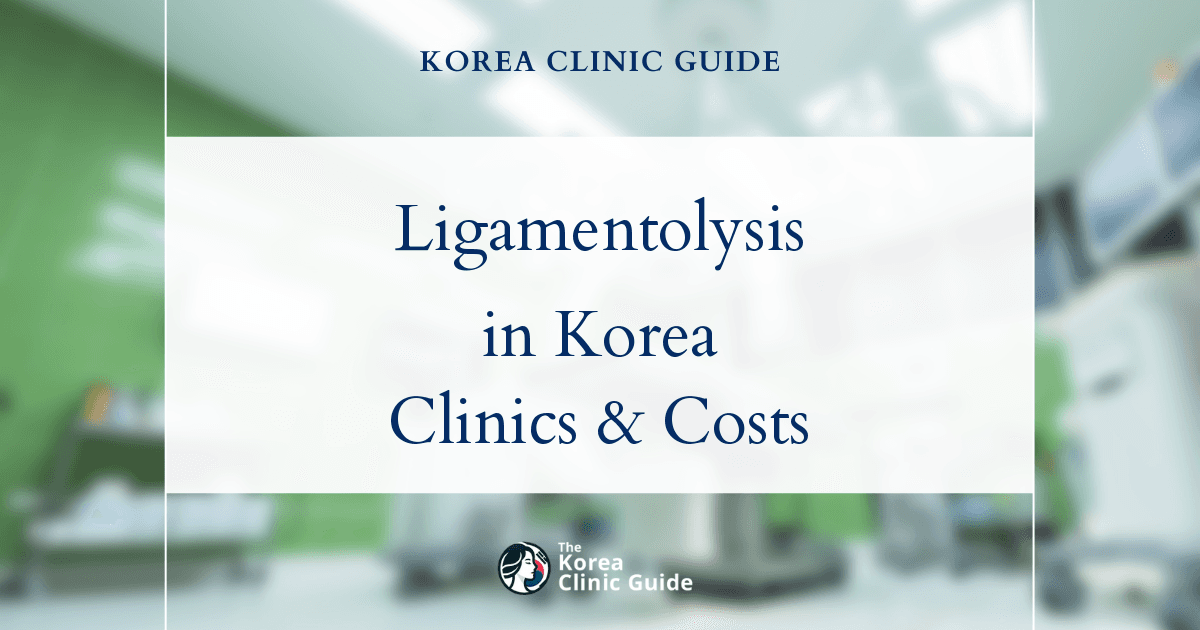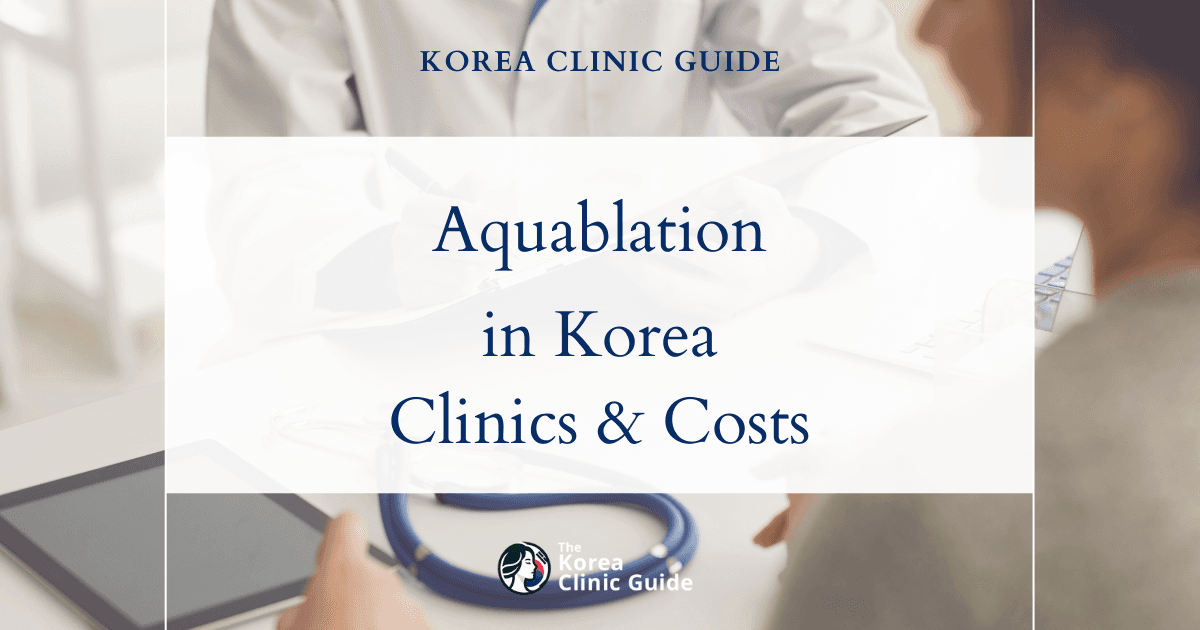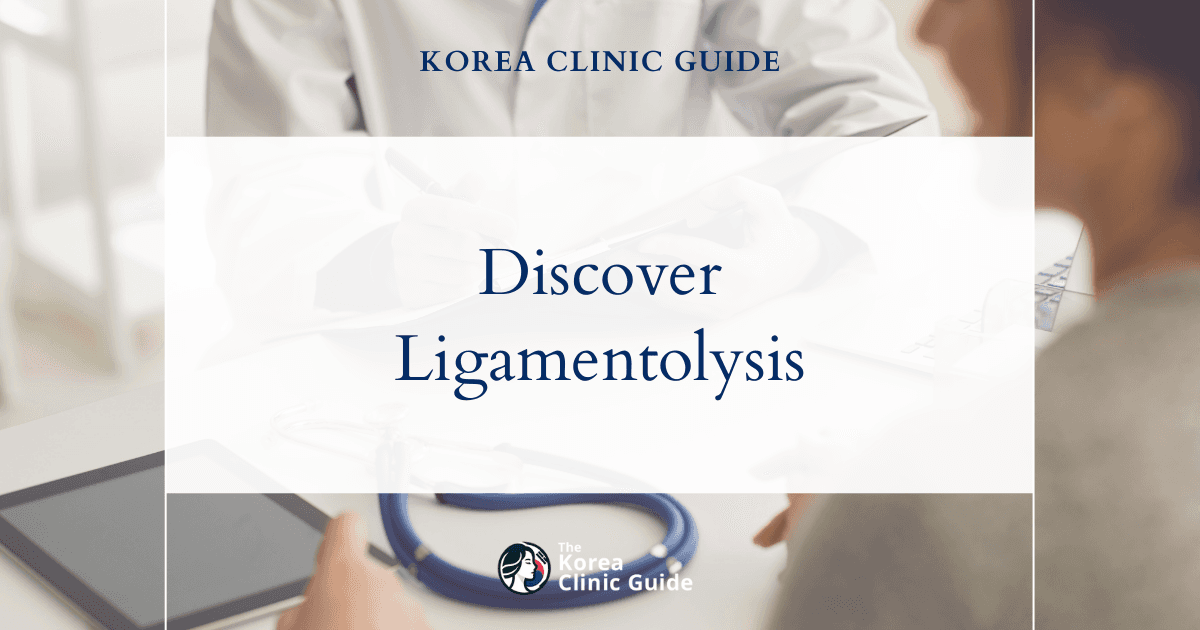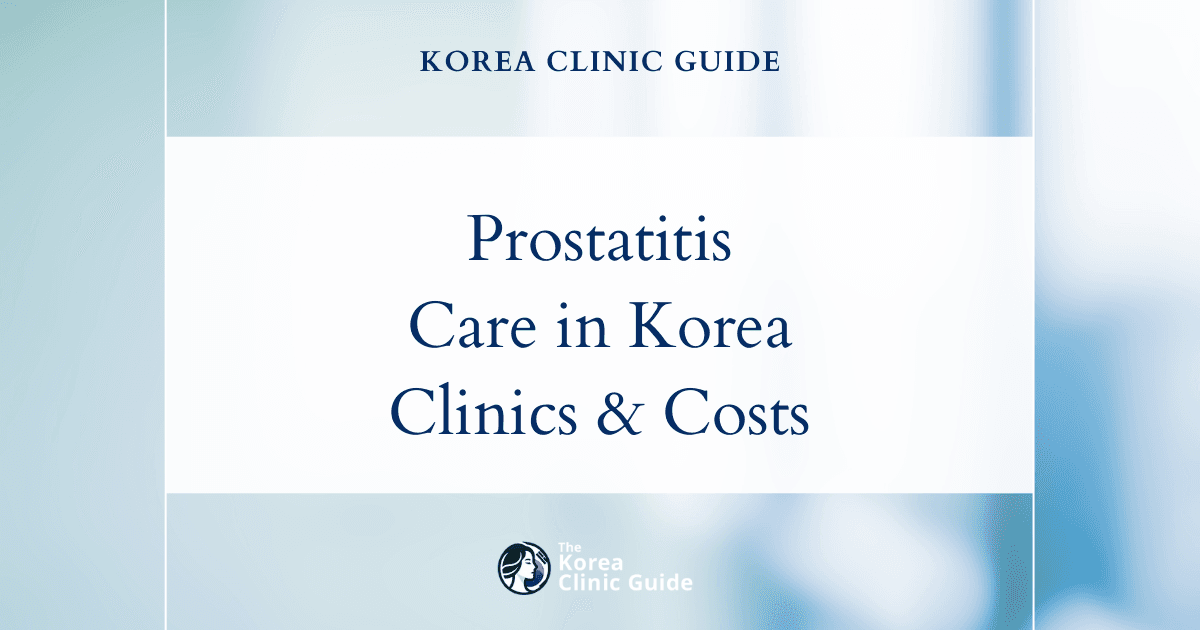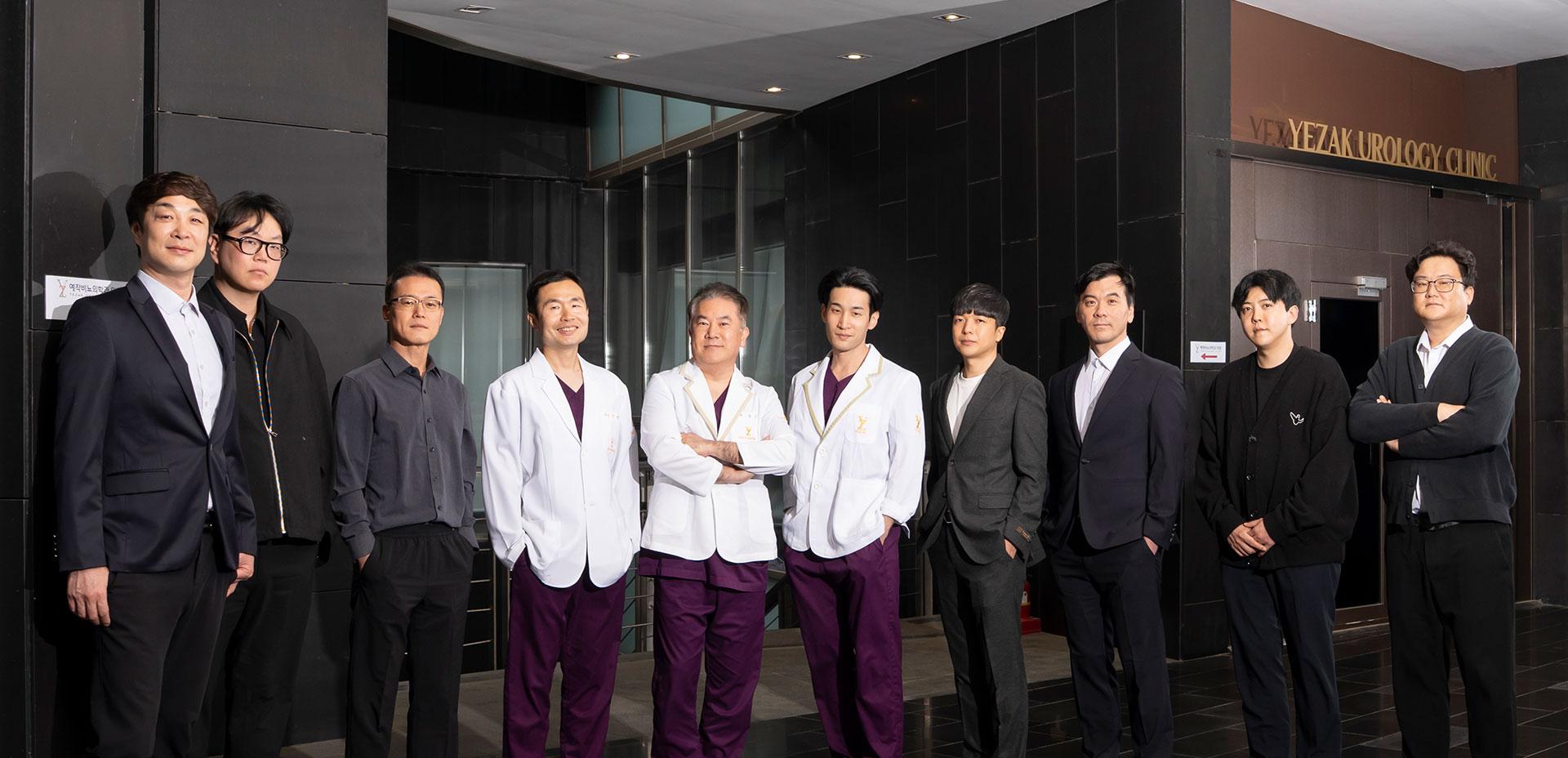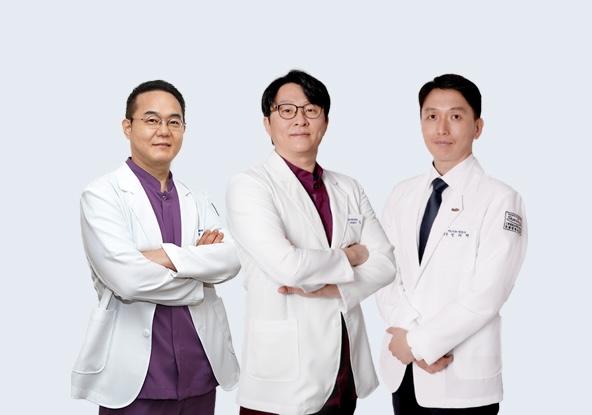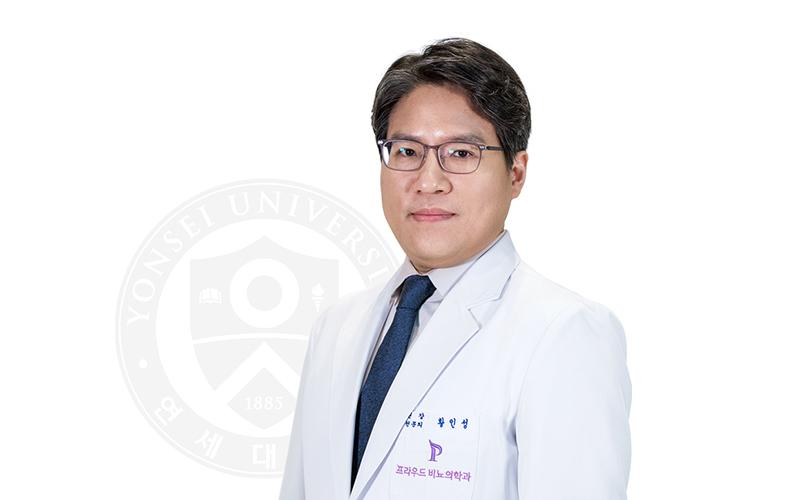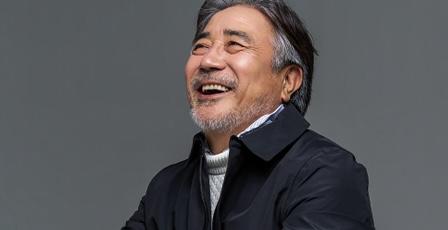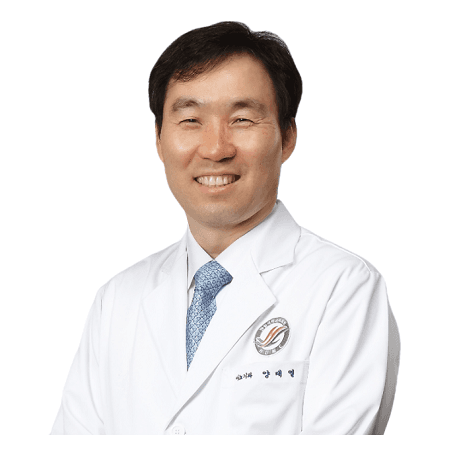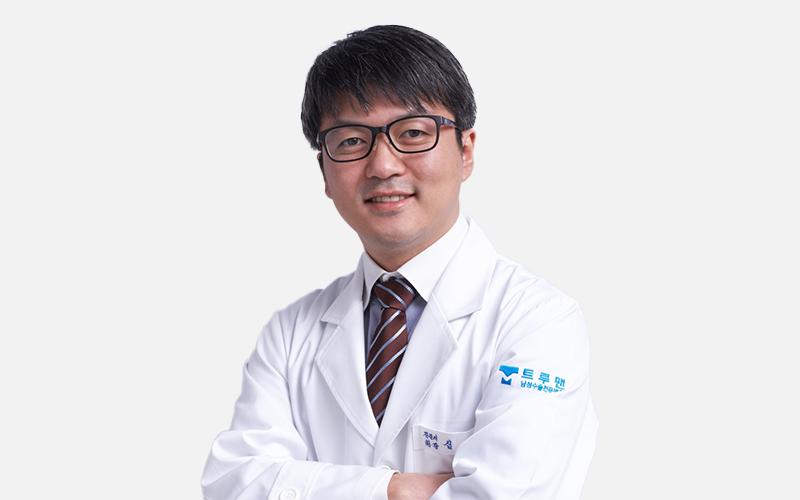Medical Tourism Blog
UroLift in Korea | Best Clinics, Costs, Procedure Types & More

Table of contents
- What Is UroLift?
- Best Clinics in Korea for Urolift
- UroLift in Korea
- Cost of UroLift in Korea
- Alternatives to UroLift
- Conclusion
Considering treatment in Korea? Everything you need to know e.g. — how to avoid scams, visas, interpreters, recovery tips — in our Medical Tourism Master Guide. Plan with confidence in minutes, not weeks!
Could a simple, incision-free procedure dramatically improve the lives of thousands suffering from benign prostatic hyperplasia in Korea? As UroLift gains traction as a game-changing, minimally invasive treatment option, this article explores its rising prominence, local accessibility, and its impact on healthcare choices within the country.
What Is UroLift?
UroLift is a minimally invasive medical procedure developed to alleviate the symptoms of benign prostatic hyperplasia (BPH), a common condition among aging men where the prostate gland enlarges and obstructs the flow of urine. This innovative procedure offers a welcomed alternative to traditional treatments such as medication or invasive surgery.
Who Is It For?
UroLift is particularly beneficial for men suffering from moderate to severe lower urinary tract symptoms (LUTS) due to an enlarged prostate. These symptoms might include frequent urination, nocturia (the need to urinate multiple times during the night), weak urinary stream, and the feeling of incomplete bladder emptying. Ideal candidates for UroLift are those who:
- Have not experienced sufficient relief from medication.
- Are seeking a rapid recovery with minimal downtime.
- Prefer to avoid the side effects associated with more invasive surgical procedures.
Procedure Types
The UroLift System involves the placement of small implants that retract the enlarged prostate tissue, thus mitigating the obstruction and allowing for improved urine flow. There are no incisions made in this process, making it considerably less invasive compared to other surgical options.
-
Transurethral Implant Delivery: A urologist inserts the UroLift delivery device through the urethra to access the prostate. The system then places tiny implants that hold back the enlarged prostate tissue, preventing it from blocking the urethra.
-
Endoscopic Guidance: Typically, a small endoscope is used in conjunction with the delivery device to ensure accurate placement of the implants. This allows the physician to view the procedure in real-time, enhancing precision.
Procedure Details
-
Preparation: Prior to the procedure, patients undergo standard preoperative evaluations, which may include a review of medical history, medication adjustments, and necessary diagnostic imaging.
-
Anesthesia: UroLift can be performed under local anesthesia, though some cases may require general or spinal anesthesia depending on patient preference and clinical considerations.
-
Duration: The entire procedure often takes under an hour, with the actual implant placement requiring only a few minutes.
Benefits Over Traditional Treatments
-
Minimally Invasive: Unlike transurethral resection of the prostate (TURP) or open prostatectomy, UroLift requires no cutting, heating, or removal of prostate tissue, significantly reducing recovery times.
-
Rapid Relief: Many patients experience symptom relief as soon as two weeks post-procedure.
-
Short Recovery Time: Most patients can return to normal activities within a few days, without the need for extended catheterization.
-
Preservation of Sexual Function: UroLift is designed to avoid nerve damage, thereby preserving sexual function and reducing the risk of post-procedure erectile dysfunction.
Best Clinics in Korea for Urolift
Listed below are the best clinics in Korea for urolift:
| Yezak Urology Website{data-slug:"yezak-urology" data-position: "1"} | - Advanced, minimally invasive option: Urolift reduces obstruction without cutting, delivering quick recovery, minimal complications, and preservation of prostate function. - Expertise at scale: One of the largest urology centers in Seoul, offering robust resources, streamlined systems, and comprehensive men’s health infrastructure. - 20+ years of focused experience: Longstanding specialization in male health and surgical precision informs careful patient selection, procedure planning, and follow-up. - Technology-forward care: Equipped with the latest and most advanced technologies to support accurate diagnosis, safe procedures, and efficient recovery. - Renowned leadership and innovation: Led by a urology specialist known for developing the 5-Point Fixed Permanent Penile Lengthening Surgery, reflecting a culture of innovation and proven, safe techniques. - Team-based safety: Multi-specialist collaboration with advanced safety systems for consistent quality from evaluation through postoperative care. - Comprehensive prostate pathway: Full-spectrum BPH management—medications, minimally invasive therapies, and surgical options—ensures patients receive a tailored plan with Urolift prioritized when appropriate. | - Urolift (minimally invasive BPH treatment using sutures to lift enlarged tissue, reduces obstruction without cutting) - 5-Point Fixed Permanent Penile Lengthening Surgery | | Stantop Urology & Andrology Website{data-slug:"stantop-urology-andrology" data-position: "2"} | - StanTop Urology & Andrology Clinic is a specialized center dedicated to improving quality of life for men and women in Korea and around the world through advanced urological and andrological care. - With separate consultation and treatment rooms for men and women to ensure comfort and privacy, KBS recognition, and a track record of over 100,000 patient consultations and 40,000 surgeries, StanTop is a trusted destination for comprehensive prostate health evaluation and minimally invasive pathways for benign prostatic hyperplasia (BPH)—ideal for patients researching options such as the UroLift approach. - Beyond BPH care, StanTop offers a full spectrum of men’s health services, including erectile dysfunction solutions (inflatable and malleable implants, stem cell therapy, shockwave therapy), penile enlargement and lengthening, glans enlargement, and treatment for premature ejaculation. - Its dedicated Male Clinic provides STD check-ups, circumcision, vaseline removal, and vasectomy, while prostate-focused services span one-day check-ups, BPH management, and prostatitis treatment. - With personalized VIP services, the clinic delivers tailored, discreet, and efficient care for both domestic and international patients considering minimally invasive BPH procedures like UroLift. | - UroLift pathway - Erectile dysfunction solutions (inflatable and malleable implants, stem cell therapy, shockwave therapy) - Penile enlargement and lengthening, glans enlargement - Treatment for premature ejaculation - STD check-ups, circumcision, vaseline removal, and vasectomy - Prostate-focused services: one-day check-ups, BPH management, prostatitis treatment - VIP services | | Gamdong Urology Clinic Website{data-slug:"gamdong-urology-clinic" data-position: "3"} | - Gamdong Urology Clinic in Sinsa provides specialized care for men’s health and urological conditions, with a focus on minimally invasive solutions for benign prostatic hyperplasia (BPH). The clinic offers the UroLift System, a procedure that places tiny implants to lift and hold enlarged prostate tissue out of the way, relieving compression on the urethra and improving urine flow. - Complementing its BPH care, the clinic also offers shockwave therapy for erectile dysfunction, a non-invasive treatment using low-intensity shockwaves to enhance blood flow and support erectile function. - For inquiries or to book an appointment, visit the 10th Floor, Mulberryhills Medical Tower, 589, Gangnam-daero, Seocho-gu, Seoul. | - UroLift System - Shockwave therapy for erectile dysfunction - Address: 10th Floor, Mulberryhills Medical Tower, 589, Gangnam-daero, Seocho-gu, Seoul |
Yezak Urology
Yezak Urology in Apgujeong is one of the largest urology centers in Seoul and a dedicated men’s health clinic, offering specialized surgical and non-surgical care delivered by a multi-specialist team with advanced safety systems. With more than two decades of expertise, state-of-the-art technology, and leadership from a renowned urology specialist who developed the innovative 5-Point Fixed Permanent Penile Lengthening Surgery, Yezak combines precision and safety across the spectrum of male health. For men with benign prostatic hyperplasia (BPH), the clinic emphasizes Urolift as an advanced, minimally invasive alternative to traditional laser resection: using medical-grade sutures to lift and secure the enlarged prostate tissue, it reduces obstruction without cutting, supports quick recovery with minimal complications, and helps protect prostate health and function so patients can return to daily life comfortably.
Why Yezak stands out for Urolift
- Advanced, minimally invasive option: Urolift reduces obstruction without cutting, delivering quick recovery, minimal complications, and preservation of prostate function.
- Expertise at scale: One of the largest urology centers in Seoul, offering robust resources, streamlined systems, and comprehensive men’s health infrastructure.
- 20+ years of focused experience: Longstanding specialization in male health and surgical precision informs careful patient selection, procedure planning, and follow-up.
- Technology-forward care: Equipped with the latest and most advanced technologies to support accurate diagnosis, safe procedures, and efficient recovery.
- Renowned leadership and innovation: Led by a urology specialist known for developing the 5-Point Fixed Permanent Penile Lengthening Surgery, reflecting a culture of innovation and proven, safe techniques.
- Team-based safety: Multi-specialist collaboration with advanced safety systems for consistent quality from evaluation through postoperative care.
- Comprehensive prostate pathway: Full-spectrum BPH management—medications, minimally invasive therapies, and surgical options—ensures patients receive a tailored plan with Urolift prioritized when appropriate.
You can check out their website here: Yezak Urology Website
Stantop Urology & Andrology
StanTop Urology & Andrology Clinic is a specialized center dedicated to improving quality of life for men and women in Korea and around the world through advanced urological and andrological care. With separate consultation and treatment rooms for men and women to ensure comfort and privacy, KBS recognition, and a track record of over 100,000 patient consultations and 40,000 surgeries, StanTop is a trusted destination for comprehensive prostate health evaluation and minimally invasive pathways for benign prostatic hyperplasia (BPH)—ideal for patients researching options such as the UroLift approach.
Beyond BPH care, StanTop offers a full spectrum of men’s health services, including erectile dysfunction solutions (inflatable and malleable implants, stem cell therapy, shockwave therapy), penile enlargement and lengthening, glans enlargement, and treatment for premature ejaculation. Its dedicated Male Clinic provides STD check-ups, circumcision, vaseline removal, and vasectomy, while prostate-focused services span one-day check-ups, BPH management, and prostatitis treatment. With personalized VIP services, the clinic delivers tailored, discreet, and efficient care for both domestic and international patients considering minimally invasive BPH procedures like UroLift.
You can check out their website here: Stantop Urology & Andrology Website
Gamdong Urology Clinic
Gamdong Urology Clinic in Sinsa provides specialized care for men’s health and urological conditions, with a focus on minimally invasive solutions for benign prostatic hyperplasia (BPH). The clinic offers the UroLift System, a procedure that places tiny implants to lift and hold enlarged prostate tissue out of the way, relieving compression on the urethra and improving urine flow.
Complementing its BPH care, the clinic also offers shockwave therapy for erectile dysfunction, a non-invasive treatment using low-intensity shockwaves to enhance blood flow and support erectile function. For inquiries or to book an appointment, visit the 10th Floor, Mulberryhills Medical Tower, 589, Gangnam-daero, Seocho-gu, Seoul.
Find more about this clinic here: Gamdong Urology Clinic Website
Availability in Korea
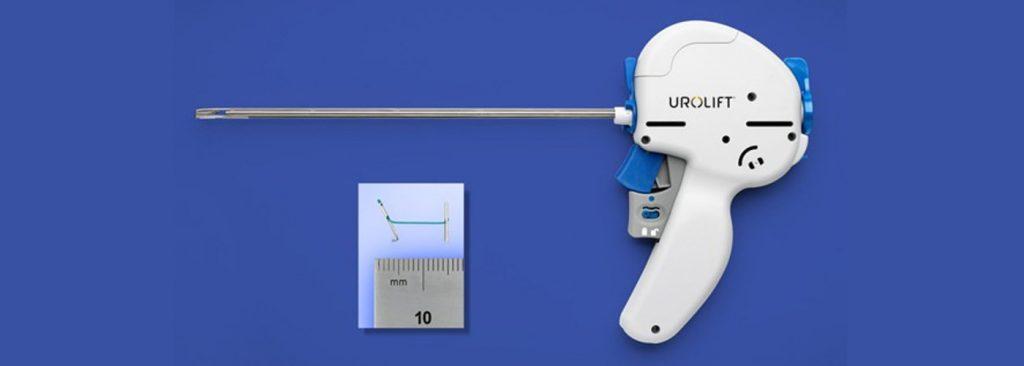
Due to its efficacy and minimal side effects, UroLift has been gaining popularity in medical practices across Korea. It is typically offered in specialized urology clinics and hospitals that are equipped with the necessary expertise and technology to perform this advanced procedure. Prospective patients are advised to consult with a qualified urologist to determine their suitability for UroLift and to discuss the potential benefits and risks based on their individual health profiles.
UroLift in Korea
The UroLift System is a minimally invasive medical procedure designed to treat benign prostatic hyperplasia (BPH), a condition that affects a large number of men as they age. In Korea, this procedure has gained prominence due to its effectiveness and minimal recovery time.
Initial Consultation
The journey begins with a comprehensive consultation. Men experiencing symptoms such as frequent urination, difficulty starting urination, or weak stream will typically consult a urologist. In Korea, medical practitioners are known for their thorough patient evaluations, which often include detailed medical history, physical examination, and a series of diagnostic tests such as ultrasound and uroflowmetry.
Pre-procedure Preparations
Upon confirming the need for UroLift, the patient will be given detailed pre-procedure instructions. This might include restrictions on food and drink prior to the day of the procedure. Many Korean hospitals and clinics offer a rigorous pre-operative process that includes blood tests and EKGs to ensure the patient's readiness and overall health.
The UroLift Procedure
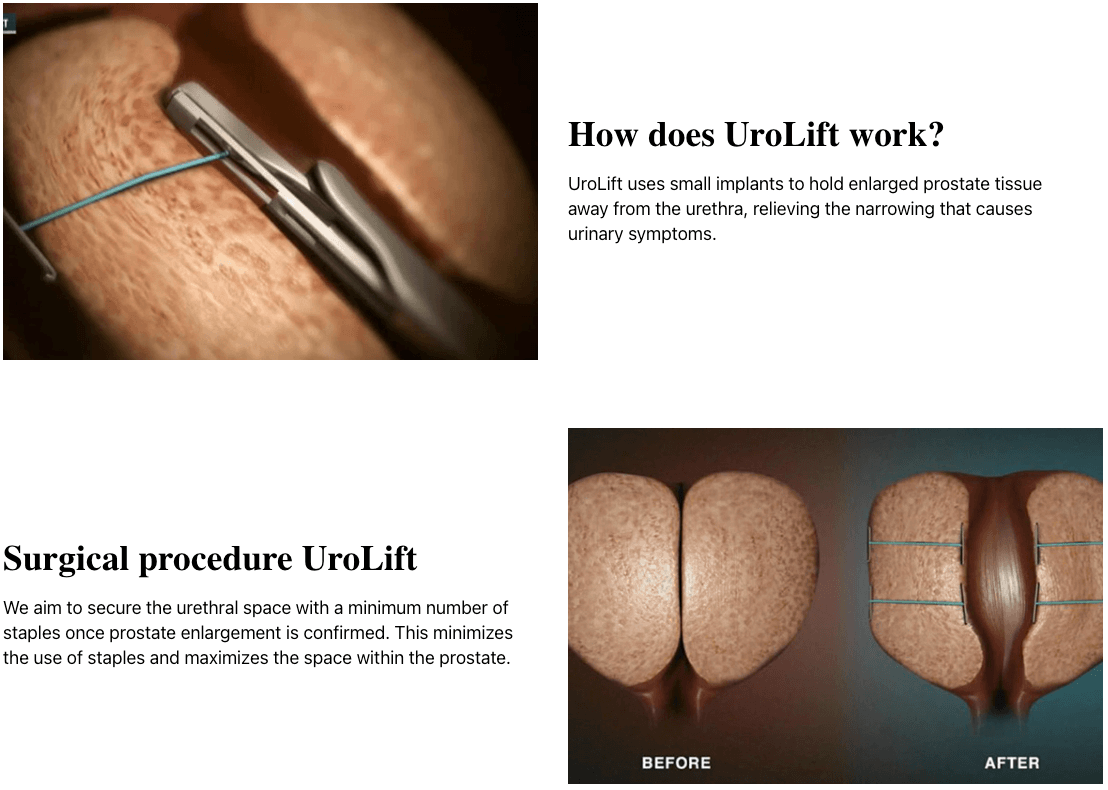
The UroLift procedure is performed in an outpatient setting, often within the urology department of a hospital or a specialized clinic. On the day of the procedure, patients in Korea can expect a seamless experience marked by efficiency and high standards of care.
-
Anesthesia: The procedure is usually carried out under local anesthesia with sedation, though general anesthesia can be an option depending on the patient’s comfort and the doctor's recommendation.
-
The Procedure: The surgeon uses the UroLift device to place tiny implants that lift and hold the enlarged prostate tissue away from the urethra, resulting in improved urine flow. The procedure typically takes about 60 minutes. Korean medical facilities are equipped with advanced technology, ensuring precision and safety throughout the procedure.
Post-procedure Care
After the procedure, patients are monitored in a recovery area for a few hours. The medical staff in Korea is known for their attentive care, ensuring that patients are comfortable and stable before being discharged.
Recovery
Recovery time for UroLift in Korea is relatively fast. Here’s what most patients can expect:
-
Immediate Recovery: Patients can usually resume normal activities within a few days. Mild symptoms such as soreness, light bleeding, and burning during urination might be experienced but typically subside within a week.
-
Follow-up: Korean healthcare providers emphasize follow-up care, with scheduled visits to monitor the effectiveness of the procedure and manage any post-operative symptoms.
Cultural Considerations
Korea’s healthcare system is renowned for its patient-centric approach, high level of professionalism, and cleanliness. Language barriers can be a concern, but many top medical facilities have multilingual staff or offer translation services to ensure clear communication.
Advantages of Getting UroLift in Korea
Korea is becoming a popular destination for medical tourism, thanks to its advanced medical technologies and skilled healthcare professionals. Patients opting for UroLift in Korea benefit from:
- State-of-the-art Facilities: Korean hospitals are known for their modern, well-equipped facilities.
- Expertise: Korean urologists are often highly trained and experienced, many having international educational backgrounds or certifications.
- Affordability: Compared to Western countries, the cost of the UroLift procedure in Korea can be more affordable, even when considering travel and accommodation expenses.
For those struggling with the symptoms of BPH, undergoing the UroLift procedure in Korea promises not only medical excellence but also a reassuring, patient-focused experience.
Cost of UroLift in Korea
When considering the UroLift procedure in Korea, it’s important to understand the various expenses involved. The primary costs can be broadly categorized into two sections: medical procedure costs and travel-related expenses.
Medical Procedure Costs
The UroLift procedure, designed to treat benign prostatic hyperplasia (BPH), is generally more affordable in Korea compared to many Western countries. On average, the cost of the UroLift procedure in Korea ranges from $4,000 to $6,000 USD. This price typically includes:
- Consultation fees with the urologist
- Pre-operative tests and evaluations
- The UroLift implants and the surgical procedure
- Post-operative care and follow-up consultations
However, the exact cost can vary depending on the specific hospital or clinic, the expertise of the medical staff, and any additional services or extended care required.
Travel-Related Expenses
In addition to the medical costs, patients traveling to Korea for the UroLift procedure should also consider various travel-related expenses.
Airfare
Round-trip flights to Korea can vary greatly based on the point of departure, the season, and the airline. On average, a round-trip ticket from the United States or Europe to Korea can range from $800 to $1,500 USD. It’s advisable to book flights well in advance to secure the best rates.
Accommodation
Korea offers a wide range of accommodation options to fit different budgets. Depending on the location and standard of comfort, nightly rates for hotels can vary:
- Budget hotels and hostels: $30 to $70 USD per night
- Mid-range hotels: $70 to $150 USD per night
- Luxury hotels: $150 USD and above per night
Patients may need to stay in Korea for approximately one to two weeks to cover pre-operative consultations and post-operative recovery, which could result in a total accommodation cost of $500 to $2,000 USD.
Daily Expenses
Daily expenses, including food, transportation, and miscellaneous costs, should also be factored into the budget. On average, daily expenses can amount to:
- Meals: $20 to $50 USD per day
- Local transportation (taxis, buses, subway): $10 to $30 USD per day
- Miscellaneous (phone data, entertainment, souvenirs): $20 to $40 USD per day
Based on a two-week stay, this can result in additional costs ranging from $700 to $1,600 USD.
Total Estimated Cost
Adding up all these expenses, the total estimated cost for a patient traveling to Korea for the UroLift procedure can range from $6,000 to $10,000 USD. This estimate provides a comprehensive overview, covering both the medical procedure and travel-related expenses, offering potential savings compared to undergoing the same procedure in some Western countries.
Alternatives to UroLift
When it comes to treating benign prostatic hyperplasia (BPH), UroLift is a popular and effective method. However, it's important to consider alternative treatments that may be more suitable for certain patients based on their medical history, symptoms, and preferences. Here are three recommended alternatives to UroLift:
1. Transurethral Resection of the Prostate (TURP)
Transurethral Resection of the Prostate, commonly known as TURP, is a surgical procedure that has been a mainstay in the treatment of BPH for many years. This procedure involves the removal of prostate tissue using a resectoscope inserted through the urethra. TURP can significantly improve urinary flow and alleviate symptoms such as frequent urination and urinary retention. It’s particularly recommended for patients with moderate to severe symptoms who have not responded to medication. Potential risks include bleeding, infection, and in some cases, sexual dysfunction.
2. Laser Therapy
Laser therapy represents a minimally invasive alternative to traditional surgery. Procedures such as Holmium Laser Ablation (HoLAP) and Photoselective Vaporization of the Prostate (PVP) use laser energy to remove or diminish prostate tissue. Laser therapy is an excellent option for patients who are looking for a quicker recovery time and less bleeding compared to TURP. Additionally, this treatment is highly precise, minimizing damage to surrounding tissues. Patients with smaller to medium-sized prostates, in particular, can benefit from the effectiveness and reduced side effects associated with laser therapy.
3. Prostate Artery Embolization (PAE)
Prostate Artery Embolization (PAE) is a relatively newer, non-surgical treatment for BPH that involves reducing the blood flow to the prostate. This is done by injecting tiny particles into the arteries that supply blood to the prostate, leading to a reduction in its size and alleviation of symptoms. PAE is particularly beneficial for patients who are not good candidates for surgery due to comorbidities or who are looking for a treatment with a quick recovery time and minimal side effects. PAE has shown promising results in improving urinary symptoms and quality of life for many patients.
In summary, while UroLift is an effective procedure for BPH treatment, TURP, laser therapy, and PAE offer viable alternatives that may better suit individual patient needs depending on their specific medical situation.
Conclusion
In conclusion, the introduction of UroLift in Korea represents a significant advancement in the treatment of benign prostatic hyperplasia (BPH), offering a minimally invasive alternative to traditional surgical methods. With its ability to provide rapid symptom relief, minimal downtime, and a lower risk of side effects, UroLift is becoming an increasingly popular choice among Korean patients and urologists alike. As awareness and accessibility of this innovative procedure continue to grow, it holds the potential to greatly improve the quality of life for many men suffering from BPH across the country. The ongoing success of UroLift in Korea not only highlights the nation's commitment to adopting cutting-edge medical technologies but also underscores the importance of patient-centered healthcare solutions in addressing common yet impactful health issues.

